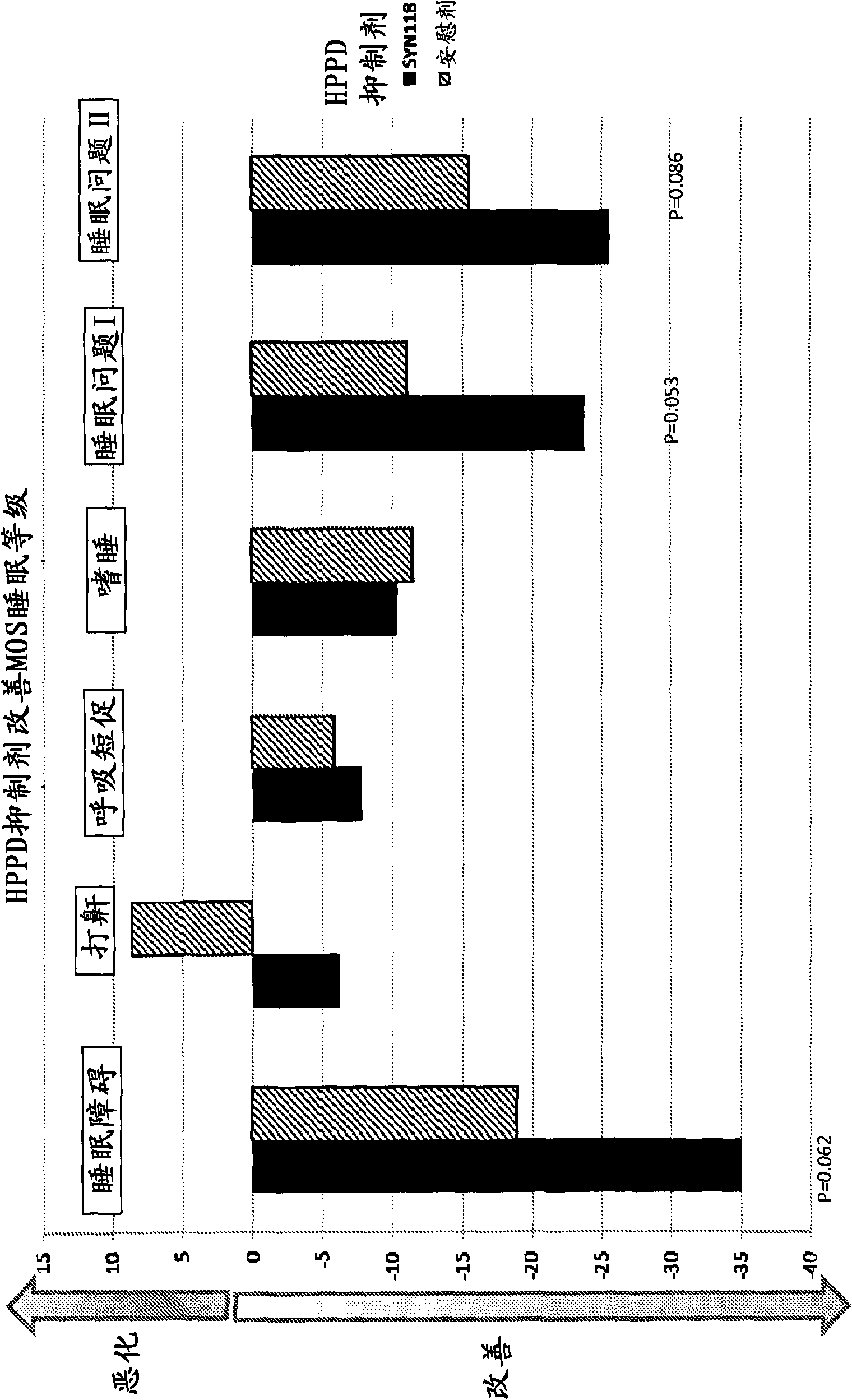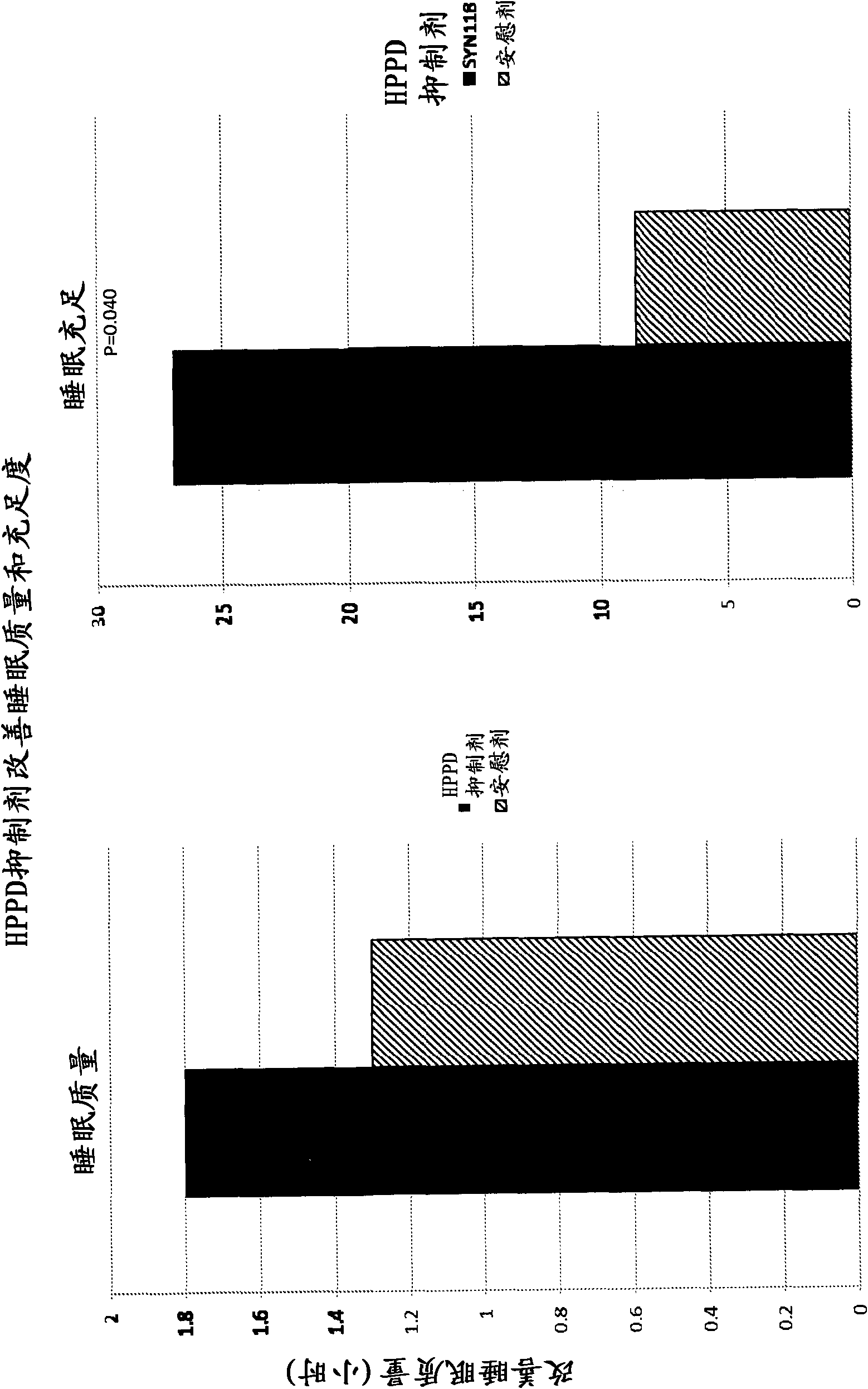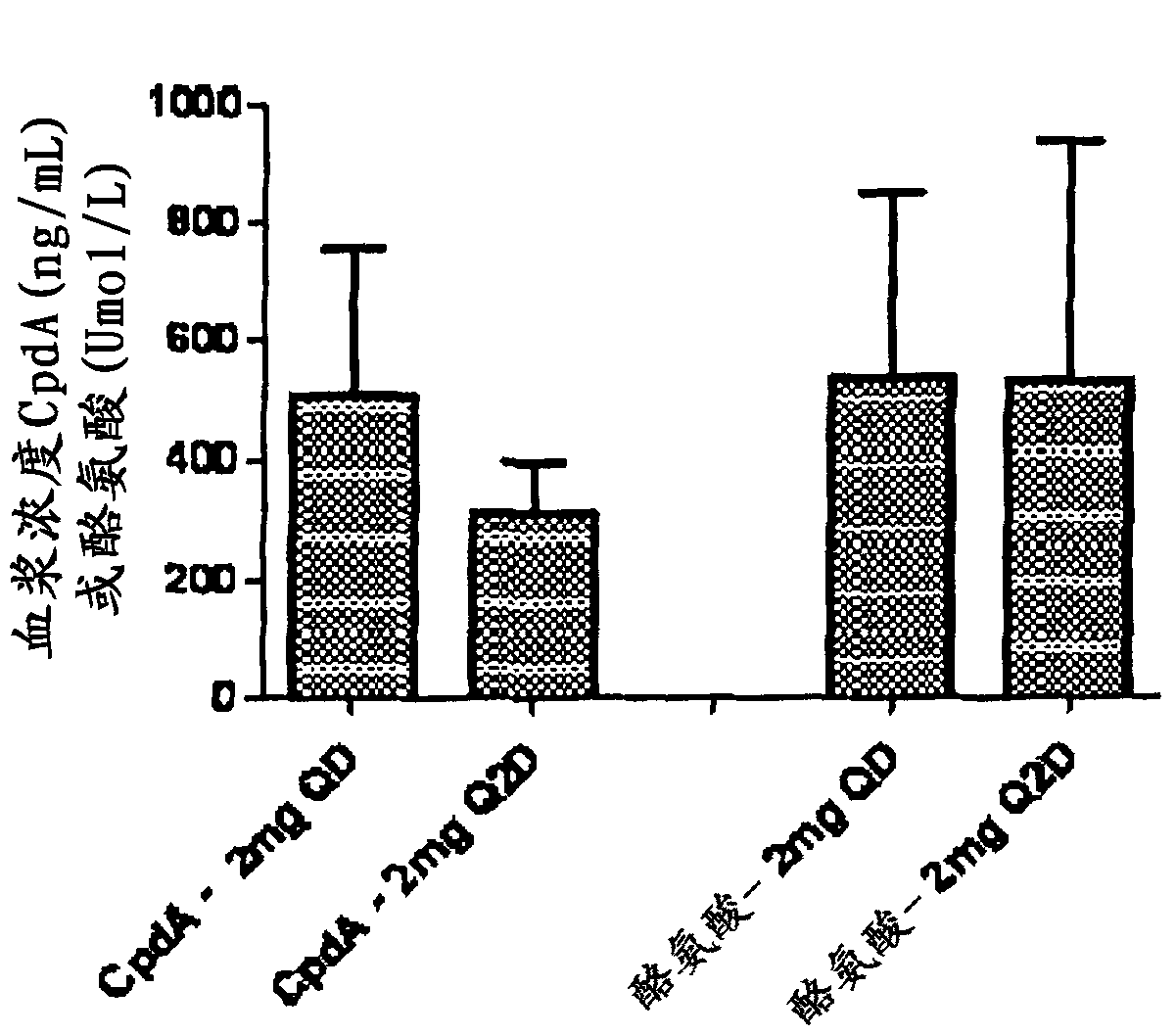Treatment of restless leg syndrome and sleep disorders
A syndrome and restless technology, applied in the direction of drug combinations, active ingredients of heterocyclic compounds, biochemical equipment and methods, etc., can solve problems such as dependence, opiate and anticonvulsant absence, GI disorders, etc.
- Summary
- Abstract
- Description
- Claims
- Application Information
AI Technical Summary
Problems solved by technology
Method used
Image
Examples
Embodiment 1
[0113] Research design
[0114] The study was a multicenter, randomized, double-blind, parallel-group, placebo-controlled study using two treatment arms, oral HPPD inhibitor (2-(2-nitro-4-trifluoromethylbenzoyl)-1, 3-cyclohexanedione) and placebo. Patients were randomly assigned in a 2:1 ratio to treatment with HPPD inhibitors or placebo. Patients were dosed with 4 mg on day 1 and 2 mg / day on days 2-14. For each patient, the total duration of treatment with study drug was 14 consecutive days, ending on the day of the last sleep laboratory measurement (Day 14), with follow-up testing 29 days after baseline.
[0115] The purpose of this exploratory study was to show proof of concept for treatment with an exemplary HPPD inhibitor in patients with moderate to severe congenital RLS. It was determined whether it was possible to demonstrate a reduction in motor symptoms and subjective severity of RLS under 2-(2-nitro-4-trifluoromethylbenzoyl)-1,3-cyclohexanedione treatment compare...
Embodiment 2
[0145] Improvement of sleep parameters
[0146] RLS patients received either placebo (7 patients) or an HPPD inhibitor (13 patients) at 4 mg on day 1, then 2 mg per day on days 2-14 of the trial. During treatment, various parameters related to RLS, especially the quality of sleep patterns, were monitored using a standard measurement scale (Medical Outcomes Study (MOS) Sleep Scale). Subjects were asked to complete a standard assessment of "normal" sleep experience again at the beginning of the trial (Baseline) and at the end of treatment (EoT), using various parameters scored according to the attached document. A trend towards a positive effect was seen in all parameters measured, reaching statistical significance for the parameter "sleep adequacy".
[0147] MOS sleep level
[0148] The MOS sleep scale is a comprehensive patient-completed sleep questionnaire consisting of 12 items (Hays and Stewart, 1992; Hays et al, 2005). Each item measures a unique aspect or characteristi...
PUM
 Login to View More
Login to View More Abstract
Description
Claims
Application Information
 Login to View More
Login to View More - Generate Ideas
- Intellectual Property
- Life Sciences
- Materials
- Tech Scout
- Unparalleled Data Quality
- Higher Quality Content
- 60% Fewer Hallucinations
Browse by: Latest US Patents, China's latest patents, Technical Efficacy Thesaurus, Application Domain, Technology Topic, Popular Technical Reports.
© 2025 PatSnap. All rights reserved.Legal|Privacy policy|Modern Slavery Act Transparency Statement|Sitemap|About US| Contact US: help@patsnap.com



